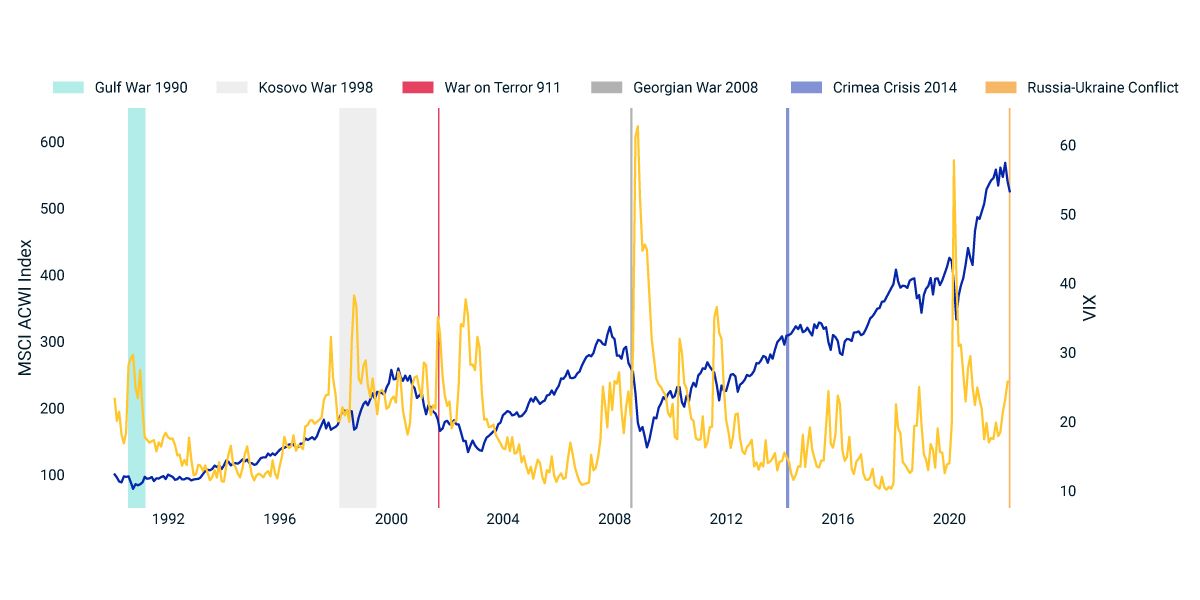How Modern Wars Affected Market Performance and Volatility
Russia's invasion of Ukraine was followed by a marked increase in stock-market volatility. The Cboe Volatility Index® (VIX) spiked from 28 on Feb. 23 to 37.5 the next day. As new sanctions were imposed on Russia, including blocking some Russian banks from the SWIFT interbank messaging system, it was easy to think the markets would not remain hospitable.
We looked at the major wars since 1990 in terms of equity-market performance, approximated by the MSCI ACWI Index, and market volatility, approximated by the VIX, to see whether history provided any lessons. The exhibit below shows that most of these wars had only a short-lived impact on equity markets and volatility. We saw neither the reversal of prewar market trends nor persistently high market volatility in the weeks after the conflicts began.
More specifically, the average return of the MSCI ACWI Index during the three months leading up to and after each event was -0.5% and -0.1%, respectively. Additionally, the average duration of heightened volatility following the wars was around 20 days.1
A key reason for this relatively mild impact was the largely contained scale of the wars in recent decades (in terms of the regions and length of these conflicts), as well as limited economic linkage of the targeted economy to the rest of world.
Of course, whether history will repeat itself remains to be seen.
Major wars since 1990 and global equity-market developments

Subscribe todayto have insights delivered to your inbox.
Research and Insights
Our investing insights explore the topics that matter most, whether on climate and ESG, current market trends or global investing and risk management across asset classes.
The content of this page is for informational purposes only and is intended for institutional professionals with the analytical resources and tools necessary to interpret any performance information. Nothing herein is intended to recommend any product, tool or service. For all references to laws, rules or regulations, please note that the information is provided “as is” and does not constitute legal advice or any binding interpretation. Any approach to comply with regulatory or policy initiatives should be discussed with your own legal counsel and/or the relevant competent authority, as needed.


